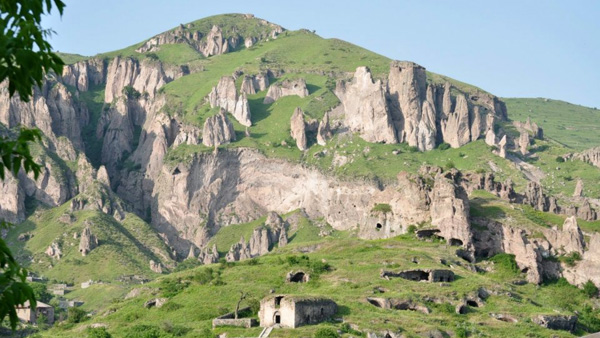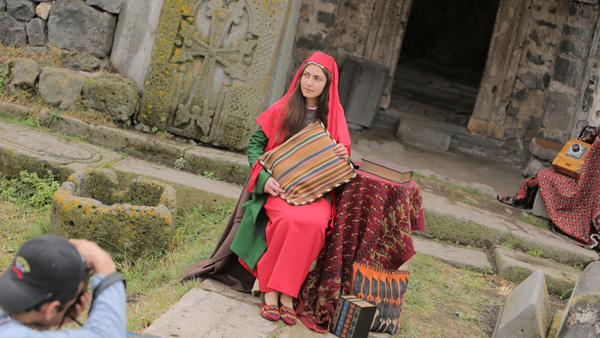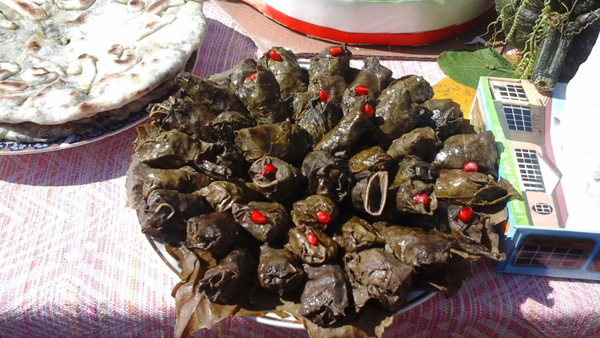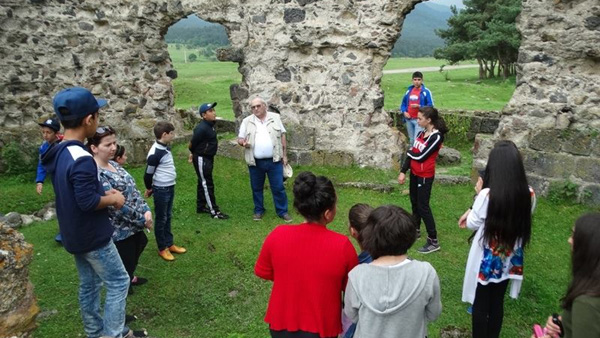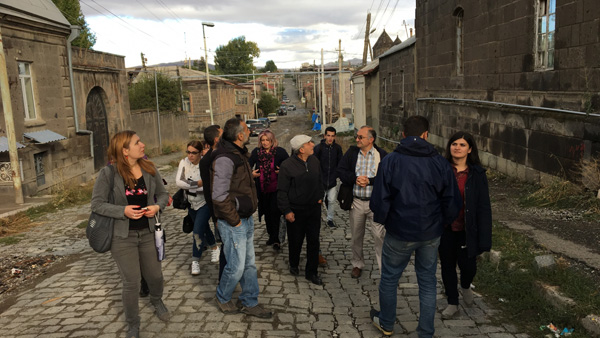Armenia, a small and mountainous country in the South Caucasus, is famous for its centuries-old history and culture. Tens of thousands of tourists visit the country each year to see monuments that date as far back as the Bronze Age. The preservation and rehabilitation of these monuments has become one of the priorities of the country’s government. The European Union (EU) also supports cultural heritage in Armenia through various projects.
The EU describes cultural heritage as a “resource for a sustainable Europe”. It also emphasises that the contribution of cultural heritage to economic growth and social cohesion is undervalued and, therefore, calls for an integrated approach to cultural heritage for Europe.
Moreover, the EU has announced 2018 as a year of cultural heritage. Throughout the year, the diversity of cultural heritage across Europe will be celebrated at EU, national, regional and local level, and the EU is encouraging more people to discover and engage with their cultural heritage. During the year, a series of events will be initiated which will enable people to become closer to and more involved with their cultural heritage.
In Armenia, the EU Delegation takes part in the European Heritage Days, jointly organised with the country’s Ministry of Culture. In 2017, pupils from all provinces of Armenia took part in the celebration “Heritage and Nature”. The EU Delegation organised a tour in the Stepanavan Dendropark, in Lori province, which gave the children an opportunity to appreciate the beauty and heritage of nature and assess its role in their lives. Children learned how to take photos in nature, and professional photographers helped them to take their own photos in nature, which were posted on the EU Delegation’s Facebook page, with a prize for the photo which got the most likes. The tour and entertainments continued also in the Lori Fortress.
Experts from the EU-funded ‘Eastern Partnership’s (EaP) Culture and Creativity Programme’ have studied the cultural landscape of Armenia and singled out the opportunities and challenges existing in the country. The programme also gave recommendations to increase the competitiveness of the country’s cultural heritage.
The EU has also supported a number of other initiatives directed at the preservation and promotion of cultural legacies, and has helped local communities find ways to efficiently use local cultural heritage resources for the development of cities, towns and other settlements in the region.
One such initiative is the CHOICE (Cultural Heritage: Opportunity for Civic Engagement) programme, which was implemented in four Eastern Partner countries – Armenia, Belarus, the Republic of Moldova and Ukraine – between 2015 and 2017. It focused on capacity building and development of local non-governmental organisations (NGOs), as well as initiatives engaged in conservation, re-thinking and promotion of cultural and historical heritage. The project helped NGOs play a greater part in policy dialogue on issues of heritage in their local communities and countries, as well as in the Eastern European region as a whole.
Food as a form of cultural heritage
One such NGO is the ‘Tumanyan Inter-Community Union’. The organisation met with the residents of 31 target areas of Tumanyan district in Armenia’s Lori province and collected traditional recipes characteristic of the region. According to the ‘The choice we made’ book, they also collected information about the history and cultural heritage of the communities during their visits.
In the meetings, the villagers recalled traditions such as the Vardavor summer festival, when people drench each other with water, and the cooking of special dishes such as “agdak”, “klor gata” and “veal hashlama” by young villagers.
In the framework of the project, three gastronomic festivals were organised in communities in Tumanyan, Gyulagarak and Shnogh. During the festival, tasting sessions were organised for visitors to sample traditional dishes, and culinary masterclasses were held in Tumanyan and Shnogh. As a result, community leaders in Tumanyan and Shnogh declared the festival day as a special food holiday, which will be celebrated every year. At the end of the project, a blog was also created which provides information about the project and the different communities of the Tumanyan region, including historic sights, recipes and video materials.
Boosting children’s knowledge on monuments and their preservation
‘Rafael’, an NGO from Lori province, set out to make the region more recognisable and accessible. It organised summer camps in 2016, which were attended by around 80 children from Shirak and Lori provinces.
“We presented different types of cultural monuments to the children,” says Hrach Marukyan, the head of the NGO, adding that during the programme, children created prototypes of road signs leading to these monuments, which were then presented to the administration of the province. “Children were working enthusiastically, hoping that the prototypes created by them would be chosen. That also helped them get an idea of our cultural heritage.”
The children received both theoretical and practical information as they visited cultural heritage sights in Lori, where they not only saw the monuments with their own eyes, but also cleaned the area and learned how to look after the monuments.
“Our aim was to introduce our national heritage to the younger generation, to instil love and respect towards the monuments,” explains Hrach, noting that they hope that children who attended the summer camp will share this knowledge and attitude of preserving cultural and historical heritage with their peers and relatives, which will extend the impact of the project.
Cultural heritage in villages promotes intercultural communication
Historic and cultural heritage monuments in Shirak province are mainly located in rural areas. Thousands of tourists visit these communities to see these sights. The NGO ‘Yerkink’ (‘Sky’) initiated a project which both helped locals to preserve their cultural heritage and created jobs in the local communities. They conducted a series of training sessions for the residents of Vahramaberd, Harich, Anipemza, Sarnaghbyur and Gyumri on the protection of cultural heritage, and some of the participants were chosen to participate in a business incubator programme.
“Locals started to create handmade souvenirs, blankets and cases with Armenian patterns and sell them to tourists who visit their villages,” says Knarik Khachatryan, a representative of the NGO. According to her, this has become a great means of intercultural communication. “Tourists will now have an opportunity to communicate with locals, learn the history and the legends of the monuments,” she says.
Socio-economic development through cultural heritage resources
‘Community-led urban strategies in historic towns’ (COMUS) is another EU-supported project in which Armenia has participated. It aims to stimulate social and economic development by enhancing cultural heritage in nine historic towns in five Eastern Neighbourhood countries: Armenia, Belarus, Georgia, the Republic of Moldova and Ukraine. Two Armenian towns took part: Gyumri and Goris.
Local beneficiary groups were set up in these towns, and members of the groups were involved in formulating the main issues of the programme, the processes for finding solutions, and defining a common vision for urban development. A number of important documents were developed in the framework of the project.
As a result of the project, both towns recorded tangible results: in 2018, Goris was declared the cultural capital of the Commonwealth of Independent States and zoning of the town of Gyumri was implemented.
By implementing these projects, the EU not only contributes to the preservation of Armenia’s historical and cultural heritage; it also helps develop a certain attitude towards the country’s monuments, traditions and habits – an attitude of respect and continuity.
These projects also have a cognitive nature, as they engage the younger generation, provide information to tourists and help the older generation to remember the traditions of the country and continue to use them in their everyday lives.
While these projects are over, their legacy remains, and the communities are continuing the good initiatives supported by EU-Armenia cooperation.
Author: Ami Chichakyan
This article was produced in the framework of the ‘EU NEIGHBOURS east’ project. The views expressed are solely those of the author of the article.



















































